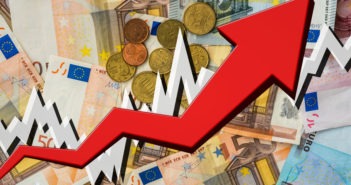Buy the rumor, sell the fact? – That is the short-term reaction to the EU deal in EUR/USD which dropped from nearly 1.1470 to 1.1430, yet still a short distance from the highest in four months. Moreover, there are solid reasons why the EU deal should provide support for the euro.
Around five months after coronavirus gripped the old continent and nearly five days of top-level deliberations, leaders in the old continent reached a unanimous deal on a recovery fund. The €750 billion scheme includes €390 billion in grants – down from €500 billion originally suggested.
Nevertheless, the majority of the money comes in the form of funds that governments can spend freely and according to their needs – unconditional on reforms overseen by the “troika.” Therefore, it opens the door to fiscal integration and more solidarity, putting the “Men in Black” from Brussels back in the history books and outside the future.
The “Frugal Four” – a group of rich countries led by Dutch Prime Minister Mark Rutte may have lowered the total sum but now, additional north-to-south transfers cannot be ruled out. Rutte and his like-minded peers may claim it is a one-off accord related to the coronavirus crisis, but they are the minority in Europe.
The united Franco-German standing behind the hardest-hit countries is the real deal. All leaders included to mutual funding and payments to countries – Eurobonds that were rejected over and over in the wake of the 2008 financial crisis. The times are changing in Europe.
Moreover, public support provides confidence to the private sector to invest. Despite historically low-interest rates and a continent awash by liquidity – courtesy of the European Central Bank – expenditure on future projects was depressed. It may now move up.
A compromise from the ambitious proposal was always on the cards and fraught negotiations – intended for the domestic audience, at least in the Netherlands’ case – are an integral part of European political culture. Instead of looking at the downside of the bloc’s second-longest summit, the upside is that now the deal is settled. In the past, leaders left inconclusive summits over and over again.
In addition to agreeing on the recovery fund, exhausted leaders also agreed on a seven-year budget running from 2021 to 2027. While that €1.074 trillion expenditure plan will still undergo scrutiny by the European Parliament, it is another matter that is mostly settled. Early in the year, the European Commission was gearing for a full year of negotiations – and now it is over in mid-summer. There is a good reason for Ursula von der Leyen, the EC’s President, to express satisfaction.
EUR/USD reaction
Reports that leaders would settle for €390 billion in grants circulated early on Monday and the approval of this headline triggered the all-too-familiar “buy the rumor, sell the fact.” Nevertheless, at 1.1430, the world’s most popular currency pair is holding onto the high levels of the year, eying the 2020 peak of 1.1495.
With Europe getting its fiscal act together, the common currency has room to run – and it also shifts the focus to US government support. Federal unemployment payments expire in the next few days and other extraordinary plans run out later on. Will Congress follow Brussels in providing more support? EUR/USD may remain bid in any case.
Get the 5 most predictable currency pairs
EU Deal Analysis: EUR/USD buy opportunity? Why the move is historic and should keep the euro bid
